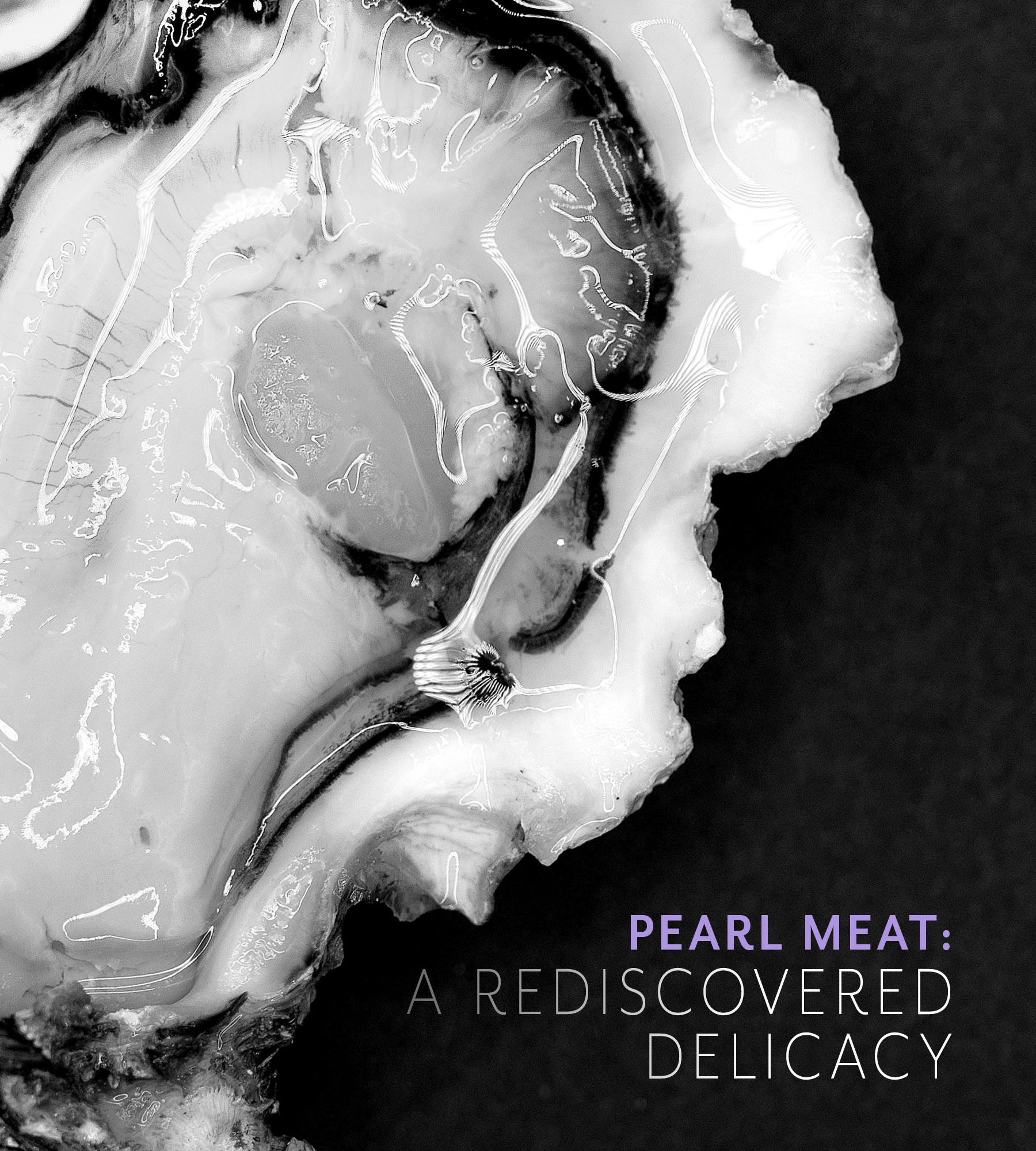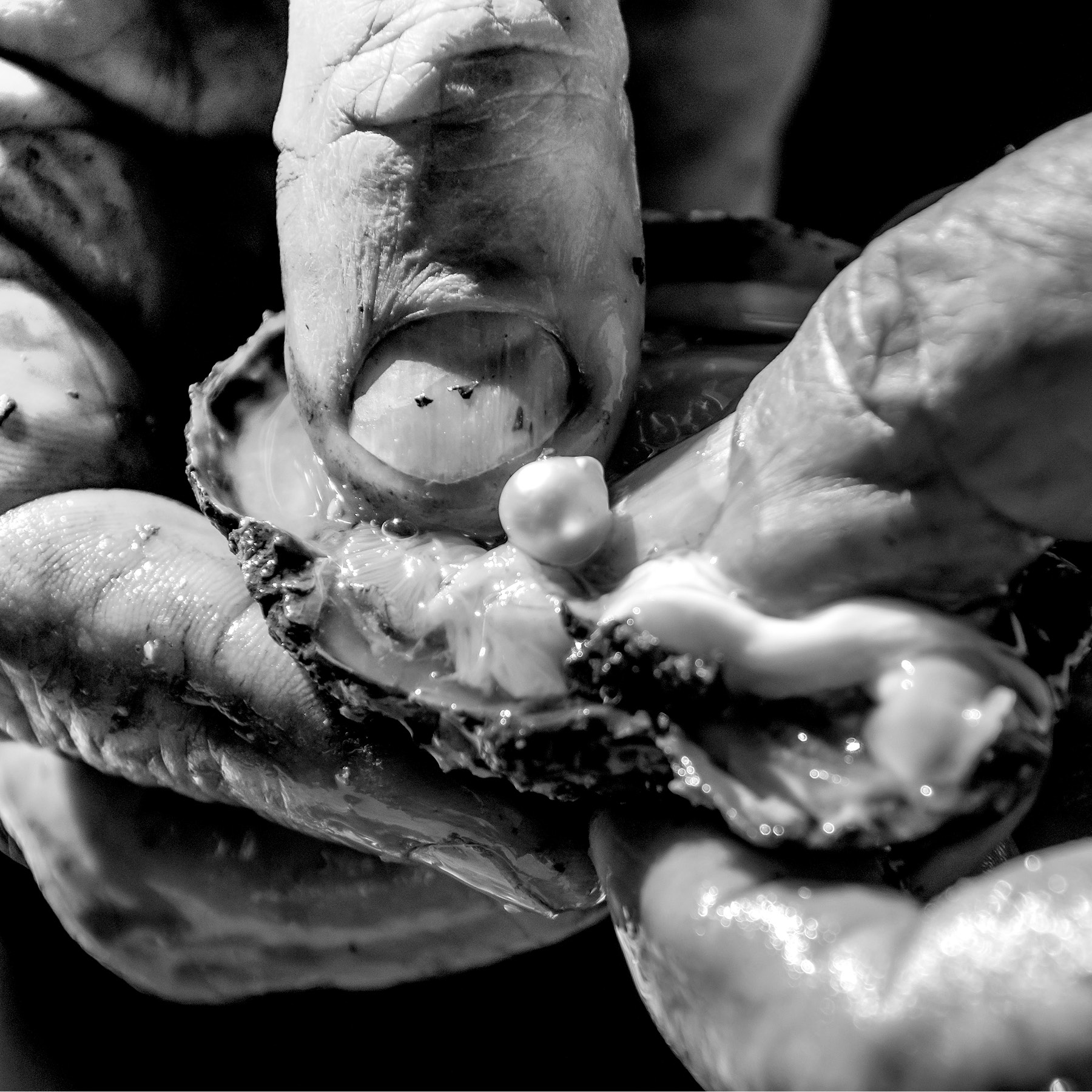Language
You can read the magazine in one of the following languages
Geolocation
You can read the global content or the content from your region

Picture an exclusive function, where everyone is dressed in the finest attire and only the best food and wine are on offer. Strings of pearls glint softly in the evening light, as the hands of the wearers reach out to select the most delectable-looking oysters on a platter set before them.
Both pearls and oysters inspire thoughts of glamor, luxury and elegance but rarely do we think of them as connected. Part of this is because oyster meat is often harvested from different kinds of oysters than those that produce pearls.
But for thousands of years, Indigenous people in northern Australia have been enjoying the meat from pearl oysters, while often discarding any pearls within.
For them, the food remained the sole reason to harvest the small shellfish; even the attractive mother-of-pearl shell would have had more practical use than a pearl. These shells are known as riji and were kept as a valuable item of trade and ceremony.
Later, in the 19th century, pearlers working out at sea would dry the meat from pearl shells once the pearl had been harvested and trade it when they returned to port.
The rare and coveted pearl might have been making money for the pearl merchants, but the pearlers themselves were paid poorly and the sale of this meat provided another income stream.

As tastes and attitudes have evolved toward different foods, pearl meat is enjoying a surge in popularity.
Associated with the working class or Indigenous culture, and seen as a cheap, less flavorsome and lower quality alternative to traditional oysters, ‘pearl meat’, as it is known, was dismissed by most as undesirable for the luxury market for a long time.
There was also a more practical reason for pearl meat’s small market – availability. Dried pearl meat became a regularly traded food in South-East Asia in the 19th and 20th centuries, but pearl oysters produce less meat than their luxury counterparts, so supply was limited.
But in more recent times, this limited supply has worked in pearl meat’s favor. As tastes and attitudes have evolved toward different foods, pearl meat is enjoying a surge in popularity, and about 80 percent of pearl meat harvested in Australia is currently exported overseas.
The unique flavor of the pearl-producing Akoya oyster – sweet and slightly salty, similar to abalone or scallops – means it is as delicious raw as it is cooked.
“The Akoya has a rather intriguing taste, with the creamy finish of a Sydney Rock oyster but the texture more like a mussel, so you basically get the best of both worlds when consuming this oyster,” Chef Kodi Southgate explained.

Akoya pearl meat lends itself to a number of mouth-watering culinary creations, ranging from Asian-inspired ceviches and pickles to combinations with native Australian ingredients.
Such versatility means that Akoya pearl meat lends itself to a number of mouth-watering culinary creations, ranging from Asian-inspired ceviches and pickles to combinations with native Australian ingredients such as native finger limes or bunya nuts, which offer a unique taste sensation.
The fact that pearl meat can be frozen offers even more versatility, meaning it’s available all year round rather than at limited times of the year like its seasonal rock oyster counterpart.
While oyster farming is a more sustainable option than harvesting wild oysters, Akoya offers another point of difference to its rock oyster counterparts.
Whereas traditional oyster farming is labor-intensive and requires either a tidal location or manual rotation to ensure the formation of the recognizable ‘cup’ shape, Akoya oysters are grown on long ropes in deeper waters and left largely alone until harvest.
This also means that they’re able to perform the traditional role of oysters in the ecosystem as they grow: acting as water filters for the ocean.
Ideally, pristine environments are best for the Akoya oyster for the best flavors and lowest contamination. It’s here that Australia has also cornered the market, due to its unique coastlines and low coastal pollution, with Albany, Western Australia, and the Hawkesbury River, New South Wales, prime locations for farming.

“This will allow us to continue to grow our New South Wales pearl farms, contributing positive restorative ecosystem services to the surrounding marine environment and new jobs to the area.”
– James Brown
“Oyster farming is now widely recognized as not just sustainable but truly regenerative in its effect on the surrounding environment and our pearl oyster farming is just an extension of that,” Broken Bay Pearl Farm Owner James Brown explains.
“This will allow us to continue to grow our New South Wales pearl farms, contributing positive restorative ecosystem services to the surrounding marine environment, and new jobs to the area.”
As changing ocean temperatures, fishing limits, geopolitical shifts and global pollution all present challenges to the seafood industry, it is innovative solutions such as Akoya pearl meat that are offering new opportunities for aquaculture – as well as exciting new culinary adventures for foodies everywhere.